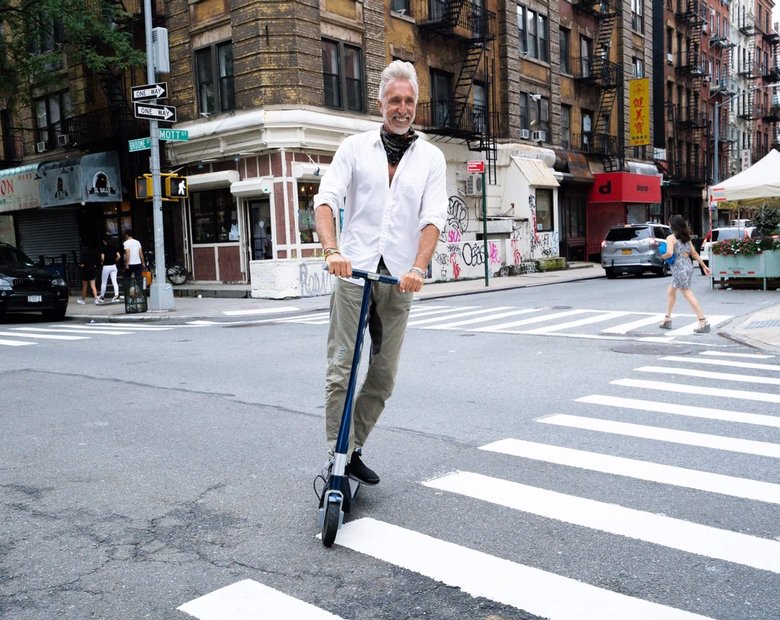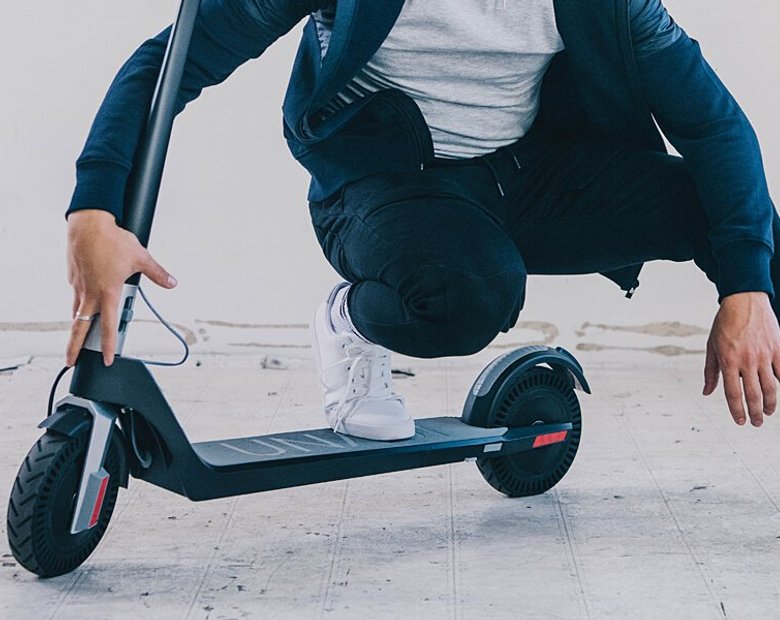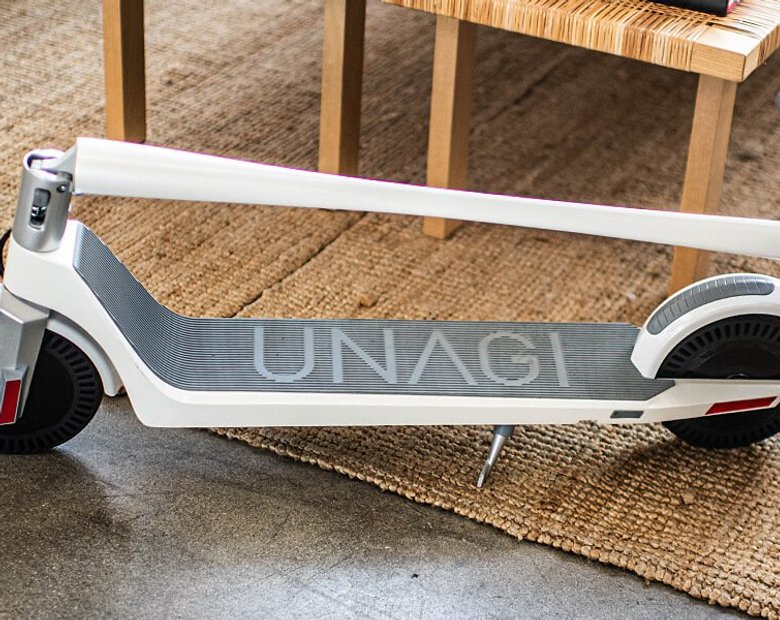Modern advances in battery technology have led to a micro mobility market filled with high-quality electric scooters for everything from commuting to the office to competitive off-road racing.
There's no doubt that it’s an exciting time to buy a scooter, but also a confusing time, given the array of brands and models on offer. There are dozens of different electric scooters for adults available across America, and trawling through all the options can be a headache.
Even among scooters designed mainly for commuting, specifications can vary widely and it’s hard to know exactly what the numbers mean, especially when it comes to how far your electric scooter can take you (also known as the scooter range).
We often see potential buyers only paying attention to specs related to daily use, such as the maximum speed, the electric scooter's weight, charging time, and maximum range (an estimate of how long the scooter can travel on a single charge).

Factors affecting electric scooter range
The Unagi Model One, for example, lists a range of 15.5 miles (25 km) for both its single-motor E250 and dual-motor E500. Some electric scooters will list a slightly lower range, some higher. But it’s important to understand that this is only an estimate and may not always represent real-world conditions.
Achieving optimal range depends on a number of variables, some of which are unrelated to the cooter and rider, such as any hills on the journey, their gradients, and durations.
Factors affecting the average electric scooter can include the average speed, the battery size, motor size and motor efficiency. However, arguably the largest impacting factor is how much weight the scooter has to carry. This includes the electric scooter weight, rider's weight, and any weight load in addition to this, for example, a heavy backpack.
Electric scooter manufacturers calculate range using a few basic assumptions that may not apply to many riders, including a rider weight of around 165 lbs (75kg), an average cruising speed of around 12 miles per hour, full battery capacity, optimal tire pressure, little to no wind, and dry, flat terrain.
Since conditions vary so widely, advertised ranges can only provide a guideline, and not all electric scooters will necessarily operate in line with these figures.
Below, we’ll look at some of the physics and engineering of electric scooters to help you better understand range capabilities and to get the most out of your electric scooter.
Range and weight: the forces of scooter motion
As we move on any wheeled vehicle, we’re fighting physical forces that want to slow us down. On an electric scooter, the battery, motor, and wheels are fighting those forces for us, pulling the combined weight of both rider and scooter with torque produced by the motor.
Weight is clearly a significant factor in how far a scooter can go before it runs out of charge, since the vehicle is pushing in two directions against drag, rolling resistance, and gravity.
Of course, electric scooters weigh different amounts, so naturally heavier models will require more energy to power.
The force of drag
Even on a cloudless day, drag, or wind resistance, will endeavor to make an electric scooter’s motor work harder and drain its battery faster. A number of different factors determine drag. For anyone interested in physics. we've provided a helpful explanation of the formula below:
Cd is the drag coefficient.
This relates to how aerodynamic you are. Unfortunately, your body isn't designed to slice through the air. While a Tesla has a drag coefficient of 0.24, a human of average weight and height has a drag coefficient of ~ 1.
A is the frontal area.
You experience more drag the bigger you are. If you are 6 feet tall, you have more surface area running into the wind than someone shorter. Crouch down in a squat and you'll speed up (bear in mind this is not recommended). The front profile of electric scooters is less than humans, so won't impact this part of the formula.
v is velocity.
The velocity term is squared. That means if you are going twice as fast, your drag will be four times as strong. To get the most range out of your electric scooter, you'll only want to zoom down the bike lane at a mediocre 3-4 miles per hour, a lower speed than is convenient.
ρ is the air density.
This is constant around the Earth. If you managed to get some electric scooters running at the bottom of the ocean, there would be a lot of drag. On the other hand, you won't experience any drag on the surface of the moon.
Increased drag from a combination of these variables results in decreased range since it requires more power from the electric scooter to compensate. While we cannot change some of these factors, lower average speeds will result in decreased drag and longer range.
Rolling Resistance
As you stand on an electric scooter, the wheels compress slightly, which increases the amount of torque required to move them. This is what is known as rolling resistance—your wheels don’t exactly want to move forward under the force of gravity. You, or rather your scooter’s motor, have to make them move (unless you’re rolling downhill).
The rolling resistance of a wheel increases with the force of gravity, so the lightest electric scooters will naturally roll the smoothest. Underinflated tires (so low tire pressure), poorly designed wheels, or worn wheel bearings can also increase rolling resistance, and a higher rolling resistance means less range since the electric scooter’s motor has to work harder and draw more charge from the battery to overcome it.

The strength of gravity
You’ve probably noticed that it’s harder to go up hills than go down them. We’re all intimately familiar with the force of gravity, students of science or not. Greater mass—which means greater rider and electric scooter weight—makes it even harder to get up those hills, increasing the strength of gravity that the electric scooter’s motor has to contend with.
In turn, this means that if you live and ride in a place that has a lot of hills, your scooter’s overall range will be less than if you live in a flat area.
It also means that a lighter scooter with the same battery power will generally have a greater range in hilly terrain and a heavier scooter will have less range.

Range & Weight: Electric Scooter Engineering
Electric scooter weight
An electric scooter’s weight will be determined by a number of factors, including construction materials and the sizes of the battery and motor. And, as we’ve discussed, a lighter scooter isn’t just easier to carry up and down the stairs. It can also be a factor in increased range, all other things being equal.
Light electric scooters are becoming increasingly popular for this reason, and a few high-quality scooters, like Unagi, use lighter materials that don’t sacrifice durability or build quality, such as aluminum alloy, magnesium, and carbon fiber, the same materials used to build professional racing cycles.
Other e-scooter manufacturers may rely on heavier materials, which can result in slower electric scooters with decreased range. Scooters designed for off-road use, courier work, or heavier riders will generally use both heavier construction materials and larger batteries and motors to counteract heavy loads.
Some electric scooters in this class advertise a range of 30 miles or more. They also weigh significantly more than most commuter scooters. One heavy-duty scooter, for example, comes in at 65 pounds (“one of the lightest in its class”) versus Unagi’s 23 and 26.5 pounds for its single- and dual-motor versions, respectively.
So do I want a heavy or light electric scooter?
The lightest electric scooter might not necessarily be the best electric scooter for the reasons above, namely that they might have a limited load capacity in comparison to some of their heftier counterparts. That being said, heavy doesn't necessarily mean long range, and depending on your needs, light scooters are often more compact and useful.
Adult electric scooters will have been designed with a max load in mind able to bear an adult. Bigger, sturdier models might have a larger weight capacity, but always make sure that you and your belongings are within the weight limit suggested by your e-scooter manufacturer.
Battery size and age
A larger battery will hold more charge, theoretically resulting in greater range. However, larger batteries also mean additional weight, which has the opposite effect. Manufacturers must balance these two factors to find an optimal size for their scooter’s battery.
Battery capacity “is one of the important factors that determine electric scooter range,” the Electric Scooter Guide points out. Capacity is measured in watt-hours (wh), which is calculated by multiplying the voltage by the ampere-hours (ah), numbers that should be listed in the scooter’s specifications (or on the battery itself).
Most electric scooters will have “a capacity of around 250 watt-hours while monster scooters can have capacities of almost 3,000 hours.”
Additionally, over time, lithium-ion batteries will hold less charge. “A fully charged 1-year old scooter stores less energy than a fully charged new electric scooter,” notes Spring, meaning that range should reasonably be expected to decrease over time.
It's worth noting that the battery life and the expected electric scooter range will also be affected by using lights or other accessories.

Motor size and efficiency
Most commuter electric scooters have hub motors built into one or both wheels (the latter is what we refer to as dual motors). An electric motor will generally range from 250 to 500 watts each, which provides a very good balance of power and weight.
Electric motors are usually extremely efficient and make use of a high percentage of the motor power they produce, though an inefficient motor can still be the cause of decreased range.
High-performance e-scooters, on the other hand, can have much more powerful motors. The heavy-duty Wolf Warrior advertises two 1200-Watt motors which generate enough power to provide a top speed of 50 miles per hour and a range of over 40 miles.
So why aren’t most scooters designed with the kind of power we find in off-road or heavy-duty scooters? Well, the Wolf Warrior weighs over 100 pounds and will not easily fold up and fit in a closet or under a desk at work, like the majority of lightweight e-scooters do.

Deciding on an electric scooter after looking into range and weight
It's a bit of a balancing act in working out the size of the electric scooter that is right for you. Opting for a lightweight e-scooter makes it easier to carry and maneuver around in your day-to-day life, whilst a high-performance electric scooter can usually carry a larger maximum load, will have more power, and be able to travel long range as standard.
Most people shopping for electric scooters are looking for the optimal balance of fun and utility for getting to and from work, taking a quick trip to the store, or zipping around with friends.
This means most riders want a scooter that is almost as easy to carry as it is to ride. Decreased weight can come at the cost of decreased range, however, if battery capacity and motor size are compromised.
The best scooter for you is one that achieves the ideal balance between all of these variables, depending on where you’re going, what the terrain will be like on the way, and how long it takes to get there.
What is the weight and range of the Unagi electric scooter
Unagi electric scooters are designed first and foremost with portability and efficiency in mind. Just the magnesium alloy handlebar alone took more than thirty prototypes to perfect, in an ambitious drive to make this electric scooter weigh less than previous models by using a material 33% lighter than aluminum.
The E350 model has one 350-watt motor, whilst the E500 has a dedicated 250-watt motor in each wheel, making it more suitable for steep inclines. Both electric scooters boast a range of 15.5 miles with a top speed of 20mph and weigh only 28.5lbs, figures that are collectively rarely matched by normal scooters on the market.
Unagi all-access subscription
If you've read through this article, had the physics equations up on a whiteboard, done the math, and are still a bit bamboozled, trying one of our high-performance scooters out for size might be a good option for you.
Throughout the entire continental United States, Unagi will deliver to your door a top-of-the-range Model One electric scooter, just serviced and fully insured, for you to use at a low monthly cost of $59 a month, with no hidden fees down the line.













